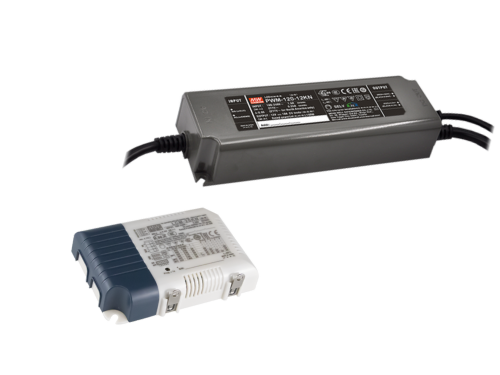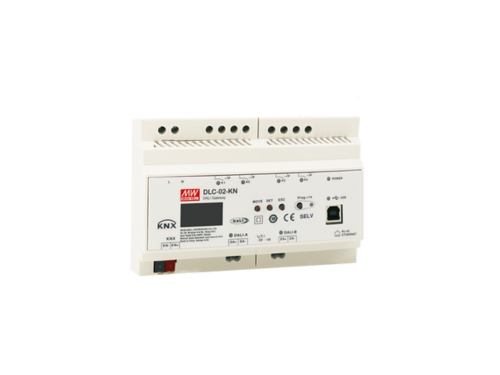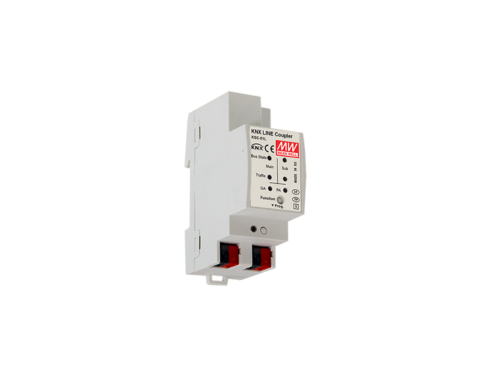Building Automation System
Building Automation System (BAS), also known as Building Management System (BMS), is an intelligent system for modern buildings. These systems offer monitoring functions and enhanced control over electrical and mechanical systems throughout a building. A Building Automation System enables users to control lighting, heating & cooling (HVAC), shutter, security, and many other applications. A well setup BAS will help to run HVAC systems and lighting system more efficiently and reduces energy consumption.
In the current market, several popular control systems exist, such as BACnet, Modbus, DALI and KNX, each with its own benefits and limitations. Depending on the purposes and objectives of the building or smart home, one control system is often customized to meet the specific demands of each situation.
One of the most complete Building automation control systems widely adopted in Europe is KNX. This system offers a uni-communication design between controllers, sensors, and actuators. KNX is specially targeting building, home automation and domotics projects and is one of the few systems which offers solutions to every automation aspect (e.g., HVAC, Acces Control, Sensors, security and lighting) in a Building Automation System.
MEAN WELL KNX PRODUCTS
MEAN WELL is the leading manufacturer of Standard Power Supplies in the market. With over 40 years of experience in the development and production of power supplies, MEAN WELL offers a wide range of high-quality KNX devices in 6 categories as below.
What are benefits of KNX?
KNX is an international recognized standard which covers every automation aspect of home and building control. This standard is adopted by more than 500 members. Some of the key benefits of KNX are:
- Excellent compatibility between KNX devices from different manufacturers
- Endless different automation solutions available in the market (over 10.000 certified KNX products are available)
- Manufacturer independent software (ETS)
- Future proof technology
- Secure system options available
- Easy integration into other BAS (sub)systems, such as Modbus, BACnet & DALI
- Large community and high acceptance rate
- Effortless installation and endless possibilities to expand
With KNX system, users are nowadays able to control all kinds of application devices under the roof of their smart building. KNX IoT (Internet of things) further allows the users to control via KNX app from mobile devices to achieve KNX wireless, which is communicated via KNX IP or KNX RF. Setting up lighting and heating of the building is easier than ever: blinds can now be shut, doors can be locked with one simple touch on the screen. Not only have living and working environments become more convenient and secure, but they are now also more energy-efficient and economical.

What is KNX Secure?
In response to the rising demand of data protection, KNX Secure technology is designed to protect all system data accordingly to the highest encryption standards. KNX Secure signs and encrypts the communication telegrams in the KNX network to avoid the manipulation by unauthorized access or hackers.
The KNX Secure protection is designed in two layers: KNX data secure and IP secure; the former one protects principally the user data against unauthorized access and manipulation, while the latter one aims to ensure that all communication telegrams and data are securely encrypted.
The secured communication data includes the commissioning (configuration) processes with the ETS software, as well as the runtime (daily) communication between KNX devices. The concept ensures that all or selected KNX telegrams are authenticated and encrypted regardless of the medium.
As result, the communication between sender and receiver can be neither interpreted nor manipulated.
KNX Lighting Control
The architecture of the KNX lighting system consists of KNX power supply that supplies the KNX bus and KNX switch actuator which is used to control the LED driver by simply turning on or off. In addition, a KNX presence detector can also be installed to automatically control the light when human or moving objects have been detected.
KNX lighting control systems can be divided into two types: Analog lighting systems and Digital lighting systems. Analog systems tend to be more flexible when it comes to the control over lighting devices, whereas digital lighting systems have as advantage more comprehensive control and the possibility to read out data from the KNX device directly such as power consumption and lamp failure.
Analog lighting systems are in general a combination of KNX actuator, KNX dimming actuator and/or KNX phase cut actuators. These actuators are powered and controlled via the KNX bus and can switch on/off the AC mains by means of a relay. Whereas dimming is achievable by a 0-10V/1-10V signal or by cutting of a phase.
Main advantages of these analog systems are that, in principle, any type of drivers or ballasts can be connected to the KNX actuator, and that a single KNX actuator would allow to switch on all connected fixtures, ballast and or drivers.
Disadvantages of analog systems are that additional wire installation is needed to transfer the 0-10V/1-10V signal, so different wire lengths could result in different light output of the light source, and there could be compatibility issues between KNX Phase cut actuator and phase cut driver.

Currently, there are few options available to make a direct digital lighting control in KNX (or other BAS) systems. The most common solution for a digital lighting system implementation in a BAS is by using a subsystem, and one of the most accepted digital lighting systems is DALI. DALI is an open protocol focusing on lighting control and is accepted by most lighting manufacturers. To create a subsystem in a KNX system, a KNX DALI Gateway is needed to translate KNX commands into DALI commands.
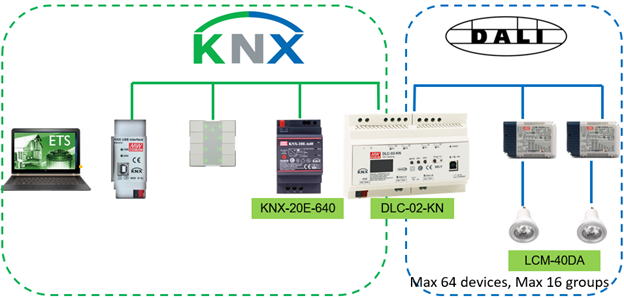
Advantages of Digital Lighting System:
- Easier installation and less wires as it is a bus system with addressable components
- Light levels can be controlled precisely and will be consistent despite the cable lengths
- Read data (Lamp failure, Power consumption)
- Emergency function
- CLO light compensation (LED’s age over the time and CLO will compensate the light output)
- Logarithmic dimmable
- Color control and complex scene setting
Disadvantages of Digital Lighting System:
- Higher cost of the components in the system
- Knowledge is needed for setting up ETS and DALI
- Additional gateway needed
- Gateway is a single point of failure
KNX Direct Digital Lighting Control
One of the drawbacks of using a subsystem for Digital lighting control is the need of gateways which generates additional costs and creates a single point of failure in a digital lighting system. Also, one would need to have the knowledge of 2 different protocols to set up the lighting system.
One should consider why using 2 different protocols when the KNX protocol has all functions to make a direct digital control over a lighting system? MEAN WELL is one of the first manufacturers offering KNX LED drivers which can be controlled directly over the KNX BUS. This is an economical solution as it simplifies the installation by using a single protocol, saving cost of KNX Dali Gateway and removing single point of failures.
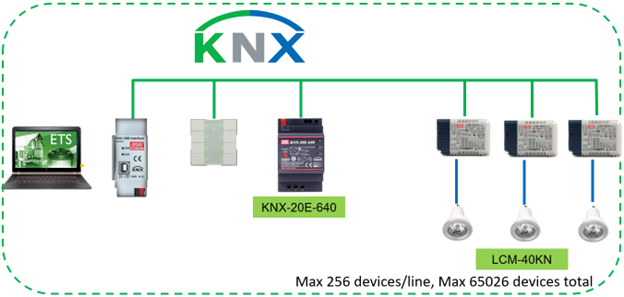
MEAN WELL KNX LED drivers are available as constant current drivers (LCM-25KN, LCM-40KN and LCM-60KN) and constant voltage dimmable LED drivers (PWM-60-KN, PWM-120-KN and PWM-200-KN) with a PWM frequency which can be setup up to 4kHz. The details of these drivers can be found here: KNX Building Automation Solution-MEAN WELL
More information about digital lighting control: Better than DALI: KNX Lighting – All About MEAN WELL Power Supplies
Blind Control with KNX
A KNX blind control or KNX shutter control system is an important element in creating an efficient energy-saving system in modern smart buildings.
Blind and shutter control systems are usually triggered by data provided by KNX Room controllers, KNX Weather stations and/or KNX Light Sensors. Based on the inputs of these devices and the settings made in the ETS software, KNX shutter actuators are triggered to set blinds and shutters in optimal positions to provide energy efficiency, shading and visual comfort.
A simple example of a blind control system is a light sensor installed to measure the sunshine radiation value of a specific indoor space. With collected data, a KNX shutter actuator is programmed via ETS software to control the shading system: when the sunshine is strong, the corresponding blinds or curtain of the wall will be closed to provide shielding, and vice versa.
KNX shutter actuators are the key element in KNX Blind control systems, ensuring the comfort of the indoor environment and promoting the energy efficiency of the smart building. For this, MEAN WELL offers the compact-sized KAA-8R which can control electrical shutter, blinds or curtains systems.
Heating and ventilation System Control with KNX
KNX is the leading system to create an intelligent controlled heating and ventilation and Air-conditioning (HVAC) system. In the market, there are many KNX HVAC solutions available, such as KNX room temperature controllers, Fan Coil controllers and temperature sensors which form the input to manage KNX heating actuators, KNX valve controls, KNX ventilator controller, actuators, and many more to manage climate and environment efficiently and comfortably inside buildings.
Efficient KNX HVAC systems can consist of a KNX temperature sensor to measure the temperature value of the office or a specific indoor space. With these values, a logic controller can control the heating system and adjust the room temperature. To meet this kind application, MEAN WELL has developed the KNX bus power supply KNX-20E and KNX-40E to provide KNX equipment power. The KNX switch actuator, KAA-8R can control the heating circuit and switch on/off the heater on the heat sink or in the underfloor heating system. Depending on the device model and parameter settings, the heating system can be controlled via switching parameters or pulse width adjustment (PWM). It is not only suitable for private residences, but also for commercial building usages, such as office buildings, schools, and hotels.
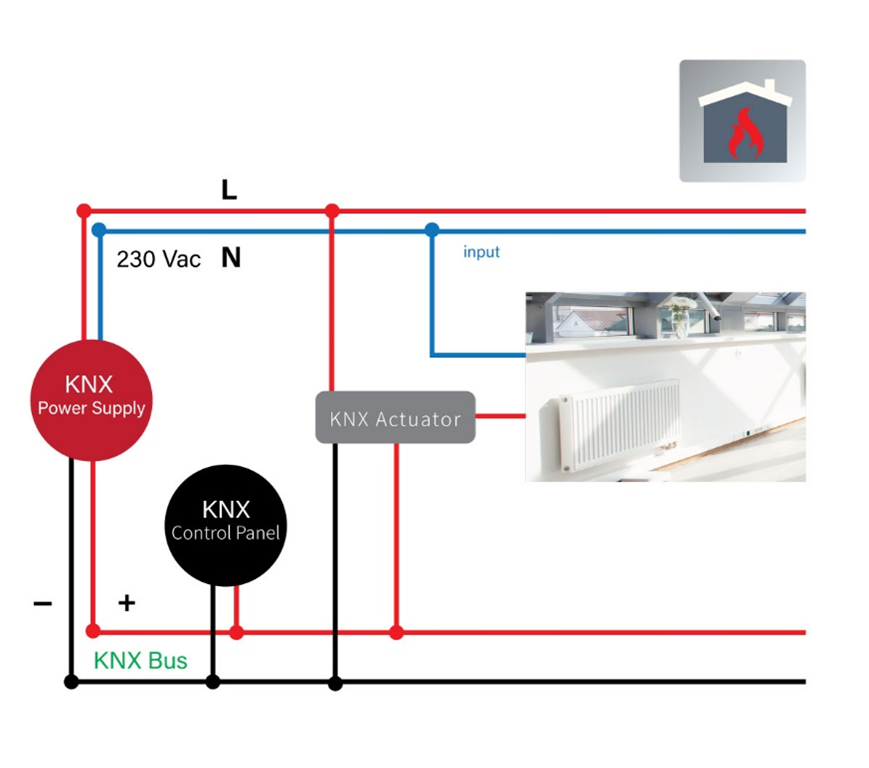
MEAN WELL KNX system product line consists of KNX power supply for KNX bus network, KNX-DALI gateway and KNX-LED drivers. For flexible building management, MEAN WELL KNX actuator can be used to control lighting and HVAC systems. MEAN WELL is the industry leader for industrial power supplies, and offers a complete portfolio of power supply solutions for smart building installations such as the compact and highly efficient HDR series in 15W/30W/60W/100W/150W. To sum up, the portfolio of MEAN WELL KNX system is the intelligent solution for networking, controlling, and powering Smart Buildings.
LEARN MORE ABOUT MEAN WELL KNX SYSYEM
Explore our blog for insightful technical notes about KNX Building Automation Applications.
Got questions?
Look at the section below to find the most frequently asked questions (with answers)
we received in Building Automation Applications.
The GTIN number can be found directly on the www.meanwell.com:

All the latest KNX firmware updates can be found on ETS Online Catalogue or MEAN WELL website dedicated to KNX products.
a. Got to KNX Building Automation Solution-MEAN WELL -> Downloads -> ETS Application Database

b. Click on Download button to see PDF file with all the hyperlink for specific products.

A Surge Protection Device is optimized for a single voltage. Therefore, SPD should be chosen according to the actual operating voltage of the part that need to be protected.Secondly, the voltage protection level shows what is the maximum voltage appeared at output side when a specified surge is coming to the SPD. In general, the lower the voltage protection level, and the higher the discharge or surge current from SPD, means the better protection that the SPD provides.
Enclosed power supplies:
- 35-125W applications: The RD, RT and RQ series provide dual, triple, and quadruple output.
- 150-320W applications: The QP series comes with 4 different outputs.
- 190-240W applications: The semi-potted HDP series provides dual output.
PCB-type power supplies:
- 25-250W applications: The PD and PT series provide dual and triple output.
- 45-200W medical applications: The MPD, MPT and MPQ series offer dual, triple, and quadruple output.
Configurable power supplies:
- 400W fanless, the UMP-400 series is a convection cooled 1U height modular power supply and can provide up to 4 different outputs.
- 450-1000W for ITE applications, MP series provides up to 7 different isolated outputs.
- 650-1200W for ITE and medical applications, NMP series can provide up to 6 different isolated outputs with the NMS single output modules from 3~55VDC. With the NMD dual output module more outputs are possible in the 3~30VDC range. Additionally, the NMP offers a 5V AUX output.
Please also see our “NMP Page”
Desktop-type power supplies:
- 25-50W applications, our GP series is a triple-output type industrial adaptor.
DC-DC modules:
- 1-2W applications, the SMD-type DETN series comes with +/-5, 12 or 15V symmetrical outputs.
- 3-30W applications, the DIP-type DCW, DCWN, RDDW, DKM, DKMW, DKA30 series come with +/- 5, 12 or 15V symmetrical outputs.
- 20W ultra-wide input range requirements, the DIP-type RDDW20UW series can provide a +/-12, 15 and 24V symmetrical output.
- 15W applications, the DIP-type DKE15 series offers a +/-5, 12, 15 or 24V symmetrical output.
- 30W applications, the DIP-type TKA30 series offers a 5V output in addition to a +/-12 or 15V symmetrical output.
- 10-15W applications, the on-board-type NSD series can provide a +/- 5, 12 or 15V symmetrical output.
The number of outputs, the available output voltage range and minimum load requirements are some key aspects to be considered when it comes to choosing a multiple output type PSU.
Basic power supplies in this category have a so-called minimum load requirement. These types of PSU rely on one same internal transformer to provide different outputs. For all outputs to work properly, a minimum current should always be drawn from the main output channel.
See below example how this is shown in the specification for the RPT-60A

More advanced power supplies such as the RT-65A do not have this restriction:

There are two options to select a multiple output PSU: a standard PSU with fixed output voltages, or modular power supplies. Modular PSUs can be personalized according to one’s systems requirements and offer much more flexibility than fixed output voltages PSUs. For instance, our NMP modular medical power supply series come with up to 6 slots for different output voltages from 3 to 55V which can be connected in series and parallel to adapt to each application.
This information can be found back in our installation manual, please visit “Installation Manual-MEAN WELL Switching Power Supply Manufacturer” and select the right product (group) and language.
Yes, CSP-3000 and PHP-3500-HV series both come with an inclusive choice of output voltages (120, 250, 400VDC). Also, our IP67 rated HEP-1000 series can provide DC output up to 100VDC.
All MEAN WELL power supplies come with at least one fuse on the line path1. The internal fuse is designed to handle the nominal current on the whole range of input voltages; for the same power, at low input voltages, the current drawn by the PSU will be higher:

If you want a more adapted protection for a specific input voltage, you could add an external fuse to protect the power supply. Considering that it will only protect the PSU (no other appliances connected after it), you should refer to the datasheet of the power supply and look for the typical input current under your input voltage. The fuse should be rated slightly higher than this current value. The selected external fuse should be a Slow-Blow type, this to avoid it is triggered by the inrush current of the power supply. For reference, most of MEAN WELL power supplies use type-T slow acting fuses.
Further please take into consideration that fuses characteristics are given for an operating temperature of 25oC. Exceeding this value will lower the current rating and shorten its lifetime. Similarly, when operated in cold areas, the current rating will be increased.
Note 1: Except for DDRH-60 series
To download a digital version of our catalog, go to www.meanwell.com
1. Click on Products
2. Click on Downloads

Find our (3) LED driver, our (4) Industrial power and (5) short forms

Find the latest news in the MEAN WELL APP


You can follow us on LinkedIn:

Go to:
https://www.linkedin.com/company/meanwell-europe-b-v-/
1. Click follow
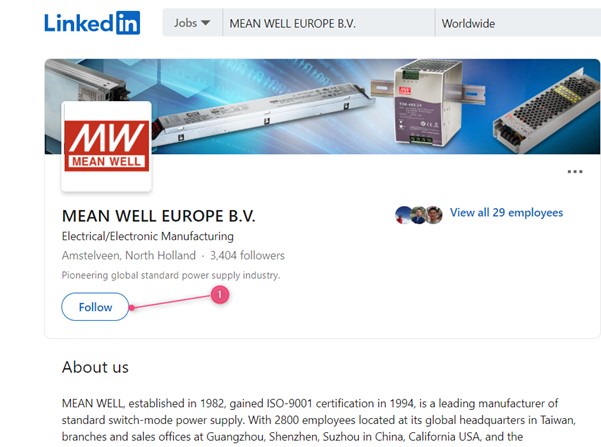
And you could install our APP see our FAQ “How to subscribe to MEAN WELL’s newsletter?”
MEAN WELL’s distributor information can be found on Distributor Network-MEAN WELL Switching Power Supply Manufacturer
- Click on the region that you are located
- Select the country you are in
- Click on the search button
- Scroll down to see our local distribution channels
- Look for the distributor with a tick for the product group that you are looking for

MEAN WELL has the largest distribution network for serving your small and medium demand Power Supplies. You can find all MEAN WELL’s distribution channels on Distributor Network-MEAN WELL Switching Power Supply Manufacturer.
OEM’s which have no sales channel for MEAN WELL products yet can contact us via the “Contact Us” form on this website.
MEAN WELL’s discontinued product schedule and End of Life products are normally updated 2 times per year, in January and in July and are published on www.meanwell.com. See FAQ “Where can I find MEAN WELL’s discontinued product schedule and End of Life information? “
The normal procedure for E.O.L. is:
- The product or series is announced in the Discontinued product list in January or July and announced as NRND (Not Recommend for New Design)
- 6 months later the lead time of the product or series will increase +30 days, the price will increase as well.
- Another 6 months later, the lead time will increase another +30 days (so + 60day compared to the original lead time), the price will increase again.
- Another 6 months later, the lead time will increase another +30day (so +90 days compared to the original lead time) and the price will increase again and additionally there will be a MOQ of 200pcs (and steps of 100 for higher quantities)
- After another 6 months the last buy is announced on the website. This will be the last opportunity to place an order for this product or series.
In total MEAN WELL’s End of Life, procedure will take 2 years. However, there are situations for instance that certification is expired, or some components can no longer be obtained by the market which will force to accelerate the EOL schedule. Therefore, it is always highly recommended from the moment that a product is on the discontinued list to design in one of our new generation products. If need any advice to this, please use the “Contact Us” function on this website.
MEAN WELL’s discontinued product schedule and End of Life products are normally updated 2 times per year, in January and in July. To see the full list, go to www.meanwell.com
1. Click on products
2. Click on Discontinued products for the schedule for the EOL schedule
Click on EOL for the MEAN WELL products which are End Of Life

You can use the “Contact Us” function on this website
MEAN WELL’s website provides you all the basic information about our Power Supplies. This includes company news, product announcements, ISO certificates, Specifications, test report, Certificates, ROHS declarations, Reach declarations and many more.
MEAN WELL’s products can be found on www.meanwell.com
1. Click on products and select the product category

Or in case you already have a part number, you can use the search function on the website:
2. Use the search function on the website to find the right product
3. Fill in the series number in the search field (do not include the last extensions such as -12 in XLG-150-12)
4. Click the search button

5. Click on the PDF icon to open the specification

Owing to line (voltage)-drop, we suggest the extension made from AC cable. In case DC cable extension is necessary, please consider Line-Drop leading to insufficient Vf so that the LED model or lamp may fail to switch ON. Moreover, EMC performance and characteristic may also be affected by DC cable extension.
There are so many MEAN WELL dimming products. How can I make a choice? What are the pros and cons?
First, you have to know your Led lamp specification in order to screen out a suitable Led driver range (Wattage, Voltage, Max Current CC or CV). From those ranges, further check a compatible dimming function. Hereunder is a table to show you the pros and cons of Dimming Function you can find in MW’s catalogue.

MEAN WELL has several charger products, and we suggest choosing them first. Chargers would be more suitable since they are designed for charging applications. Safety and approvals should be taken into account based on the final application. If you are unable to find a proper model in our charger series, our LED CC models can be used as charger. Please choose suitable products after confirming the current and voltage specification on the datasheet of the battery.
3 in 1 dimming circuit would drain 0.1mA per model. Dividing the rated current of the dimmer by the 0.1mA, and we could know how many units can be controlled by one dimming device. For resistance dimming applications, resistance for 100% dimming output would be 100K ohm divided number of models.
A LED strip is normally a Constant Voltage application (CV). For this type of CV application MEAN WELL has design the PWM, IDLV and ODLV series which will allow CV applications to dim.
3 in 1 dimming is the most common application used in LED dimming with the feature that it does not have to work with any specific dimmer. The only thing that has to be verified is that whether the dimmer (1~10V/10V PWM/resistance) is compatible with the definition advised in our specs.
All MEAN WELL chargers are preset for lead-acid batteries. For other products that can customize the charging curve (such as ENC / NPB series), customers can customize their charging curve depending on the charging and discharging characteristics of batteries. If you have other requirements, please use the contact us function on this website.
Noise is directly related to the fan which is built into the power supply. Lowering the airflow of the fan means reducing the heat dissipation ability. It will also influence the reliability of the products. Furthermore, minimum airflow of fans is defined by Safety Organization and a safety appendage will be needed if using a new fan. If fan noise is a critical concern, we suggest to select FANLESS products or contact MEAN WELL for other possibilities according to the conditions of use.
There are two different applications when power supplies are connected in series. One is to generate plus minus voltage, another is to increase total output voltage. Connection methods are as follows:
(1) Connection for plus and minus voltage are shown as follow

(2) To increase the total output voltage (Output current remain the same). Diodes connect in parallel at output side of the driver is necessary to prevent damage during start up. The voltage rating of diode shall greater than V1 + V2(shown as figure below), in addition, peak forward surge current rating shall greater than rated current.

* Because part of the signal ground is shorted with output ground, strongly suggest to use isolated signals to achieve control scheme, in order to prevent damage to the product.
MEAN WELL has launched ENC, HEP-600C, GC, PA, PB, RPB and RCB series for battery charge applications (30~1000W). However, if these models cannot fulfill your requirements, there is an alternative solution. Power supplies with constant current limiting as overload protection are suggested. Charge current varies in battery percentage (full or flat), there is high possibility to trigger overload protection when battery is low, those with overload protection as hiccup or shutdown will stop charging the battery in low battery condition. Yet, using a power supply as charging purpose is considered as overload usage, modification is required. Please Contact Us for the request.
An adaptor may need connection of a power cord to receive energy needed from the utility. You can refer to the specification of the adaptor for the connector (AC inlet) at the adaptor end of the power cord; Different countries/regions vary in type of AC socket and voltage, please look at the table below for the information of the AC plug you need.


MEAN WELL’s LED product specification normally exhibits V-I characteristics. Per the characteristics, there are generally two types of drivers, the “CC” type and the “CC+CV” type. “CC” type of driver is suitable only for LED applications whereas “CC+CV” is for either LED applications or general switching power supply applications. The section that is not suitable for LED applications are represented by dotted line, and based on the protection procedures it can be categorized into hiccup mode and constant current mode; in this section, the tolerance of current is not defined but only the characteristic of current is displayed. If customers attempt not to see a very high current under short circuit conditions, those models with hiccup mode for this section can be selected; if there are applications with motors or capacitive load, those with constant current can be chosen.

There are 2 types of Power Factor Correction circuits; one is Single Stage; the other is Two Stage.
Single Stage power supply combines functions of power factor correction and converter in one circuit but Two Stage use two separate circuits. Compared to Single Stage, Two Stage design is more complex and costly, but the immunity performance of Two Stage power supply against AC mains is much better than that of Single Stage power supply. In addition, Two Stage power supplies manifest better ripple noises performance on output. Owing to that Single Stage is only suitable for fields with quality AC mains but Two Stage can be used in serious circumstances for LED drivers or as industrial switching power supplies.
It is the small unwanted residual periodic variation of the direct current (DC) output of a power supply which has been derived from an alternating current (AC) source. The wave form is shown as figure below.

There are two AC contents, also known as Ripple and Noise (R&N), on the DC output. The first one, coming from sine wave rectification, is at a low frequency which is 2 times of the input frequency; the second one is at high frequency which is from the switching frequency. For measuring high frequency noise, a configuration of an oscilloscope with a bandwidth of 20MHz, a scope probe with shortest ground wire possible, and add 0.1uF and 47uF capacitors in parallel with test point for filtering out noise interference are required.

1. To increase the reliability of the power supply, we suggest users choose a unit that has a rating of 30% more power than actual need. For example, if the system needs a 100W source, we suggest that users choose a power supply with 130W of output power or more. By doing this, you can effectively boost the reliability of the power supply in your system.
2. We also need to consider about ambient temperature of the power supply and whether there is additional device for dissipating the heat. If the power supply is working in a high temperature environment, we need to make some derating to the output power. The derating curve of “ambient temperature” versus “output power” can be found on our specifications.
3. Choosing functions based on your application:
- Protection function: Over Voltage Protection (OVP), Over Temperature Protection (OVP), Overload Protection (OLP), and etc.
- Application function: Signaling Function (Power Good, Power Fail), Remote Control, Remote Sensing, and etc.
- Special function: Power Factor Correction (PFC), Uninterruptible Power Supply (UPS) function.
4. Make sure that the model qualifies for the safety standards and EMC regulations you need.
All MEAN WELL power supplies have an internal fuse except for the DDRH series.
MEAN WELL’s Step files/ 3D files can be found on www.meanwell.com
- Use the search function on the website to find the right product
- Fill in the series number in the search field (do not include the last extensions such as -12 in XLG-150-12)
- Click the search button
- Click on the PDF icon to open the specification

- Click on 3D OUTLINE
- Click on the model XLG-150-3D to download the step file.



